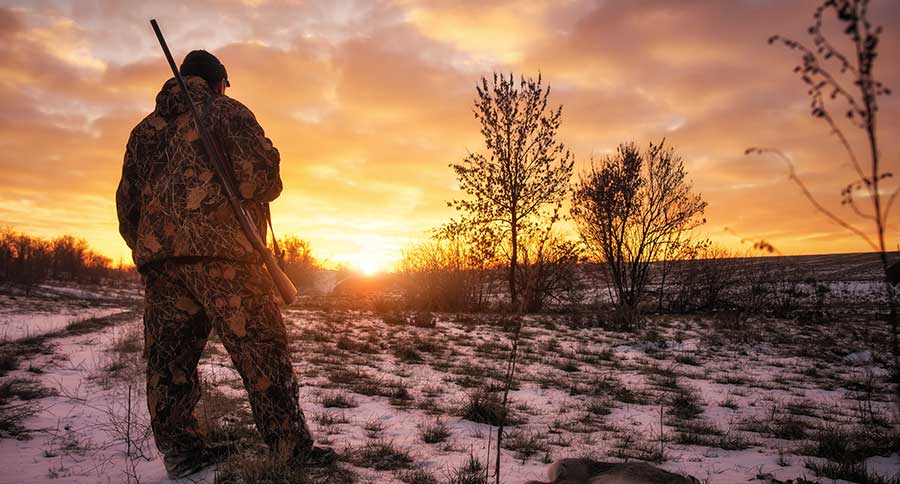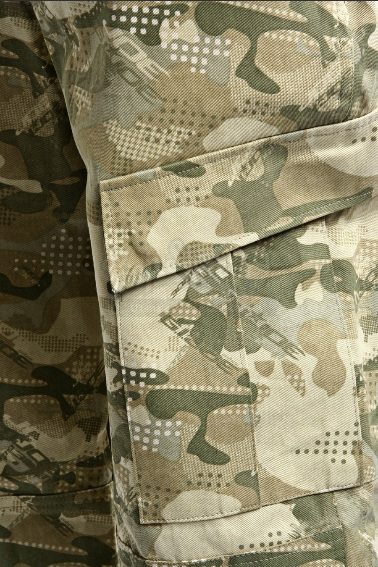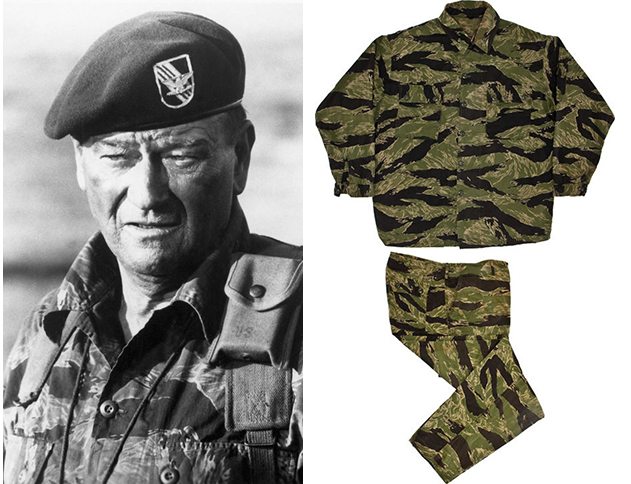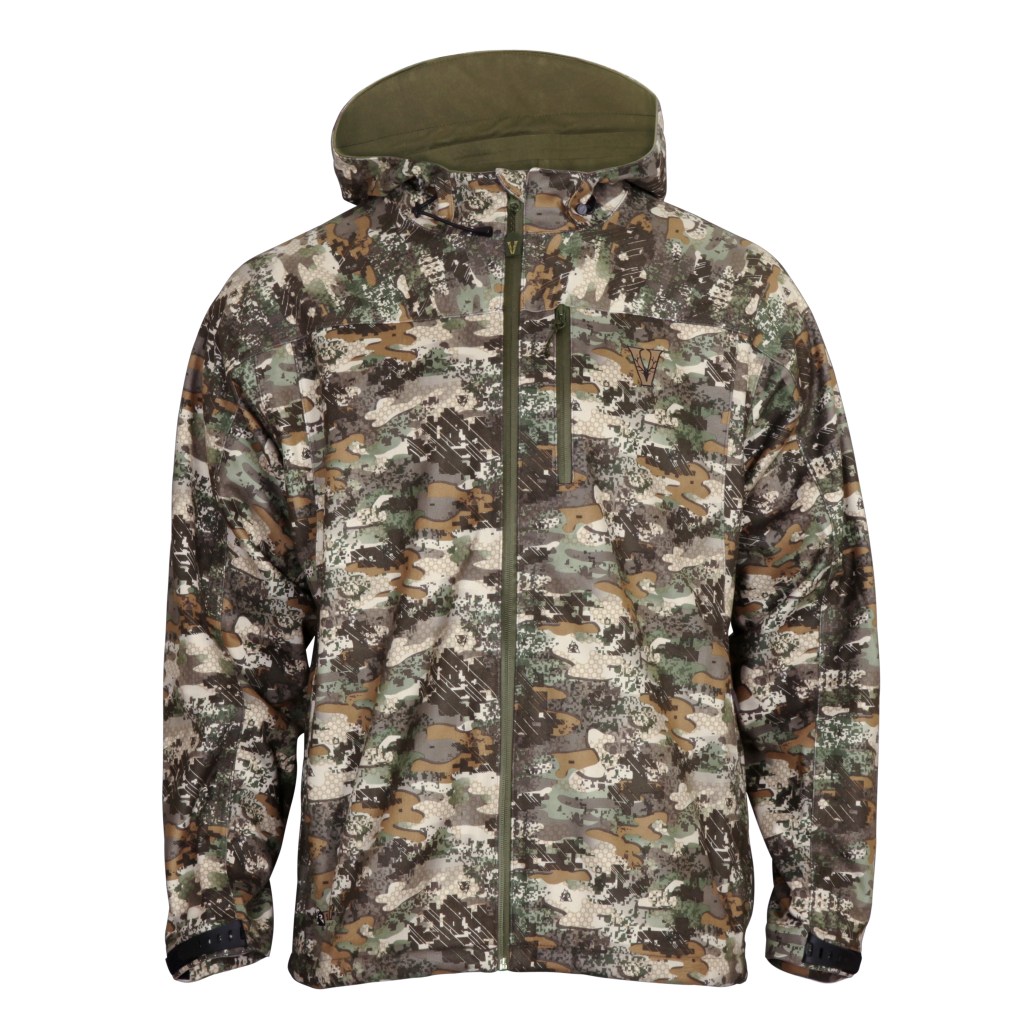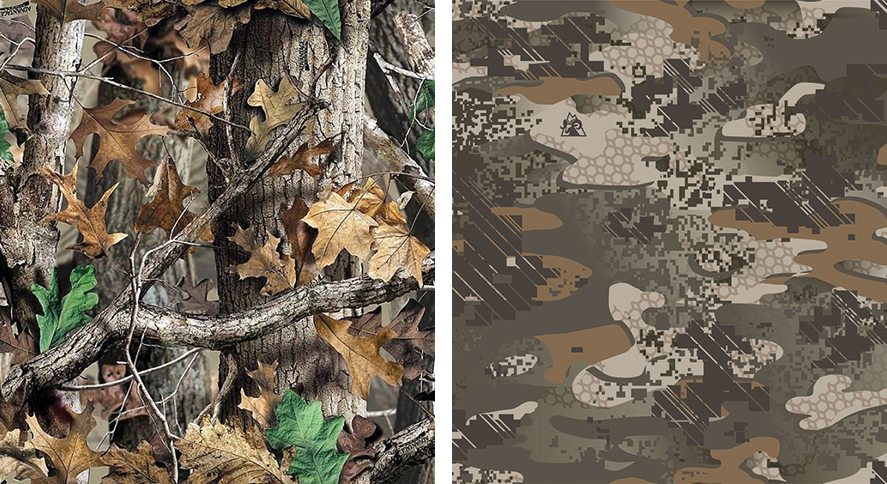Next time you don your camo to go hunting (or anywhere, really), take pride in its rich history.
Though we get a hard time from our spouses, and sometimes even our friends, the decision to wear camo is part of who we are.
To celebrate the patterns we've come to know and love, here are 12 things you never knew about the camo you're wearing.
1. The camo in your favorite movie might have been created specially for its on-screen appearance.
The digi-camo in the popular Children of Men (2006) was specially commissioned for the film's costumes.

Image via Camopedia
If you look closely, you'll also notice that the camo in the 2009 film G.I. Joe: Rise of the Cobra incorporates the G.I. Joe logo.
2. There are 13 recognized "families" of camo, including Chocolate Chip, Duck Hunter, Leaf, Woodland, Digital, Brushstroke, and Lizard.
As variants within those families (full list here), thousands of patterns have been created.
3. John Wayne has his own camo pattern named after him.
You saw him wearing it in The Green Berets. This camo pattern is a variant from the Tiger Stripe family, which was widely used during the Vietnam war.
If you've seen enough Vietnam veterans' uniforms, you might notice that dozens of different variants of the tiger stripe pattern were issued between 1964 and 1975. You can read about them all in Tiger Patterns by Sgt. Richard Johnson.
4. Woodland Camo, originally designed in the U.S., was standard issue from 1981 to 2006. Since then, it's been adapted by 17 other nations for military uniforms.
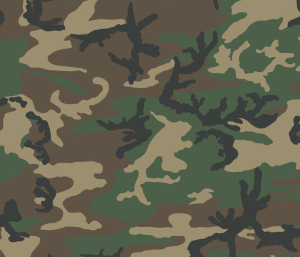
U.S. Woodland, a.k.a. M81 Camo Pattern
Throughout recent history, the U.S. government has meticulously tested hundreds of different options, setting the bar high for armed forces worldwide. Findings from these trials have also served as valuable groundwork in creating advanced camo patterns for hunters.
5. Venator (Latin for "Hunter") is the first all-region camo pattern designed for hunters.
The idea for the pattern came from some hunters employed at Rocky Boots who wanted a better western region-friendly pattern. Two years later, they had developed a much more versatile pattern that blends in with North American regional terrain as well as a wider variety of wilderness settings.
The secret is strategic color choice: the four main colors used in this pattern are found in almost every environment in the world.
6. The first pixelated (a.k.a. digital) camo pattern was pioneered in 1996 by the Canadian government and called CADPAT (Canadian Pattern).

CADPAT (Left) and MARPAT (Right)
A similar variant, called MARPAT, was quickly adopted by the U.S. Marines in 2001. Though that might seem like only yesterday, digital camo is now more than 20 years old, and recent variants have come a long way!
7. Modern camo patterns continue to incorporate pixelation because it really works.
The graph below, shared by Lt. Col. Timothy R. O'Neill, Ph.D., United States Army (Ret.), shows the effectiveness of MARPAT compared to two other patterns in terms of how long it takes to be detected by a first-year cadet with 20-20 vision and no colorblindness.
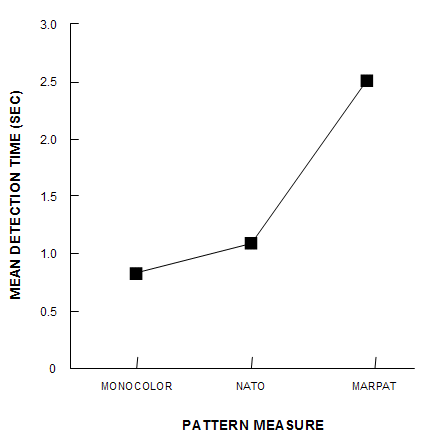
8. If you ever see an authentic vintage uniform with this pattern, keep it, because only a few were ever produced.
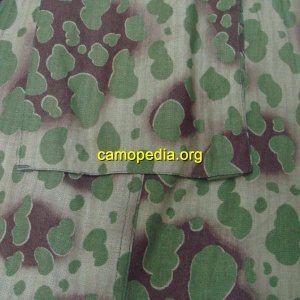
Image via Camopedia
The McLaren camo pattern (above) was briefly tested during WWII, around 1942, but it was never adopted. There are many reasons a pattern can be discontinued: it might have been developed for a niche application, failed to stand the test of time, or simply proved ineffective in the field.
9. Most commercial camo patterns for hunters don't conceal effectively once you start moving.
The reason is that rather than being engineered to adapt to various environments, they're based more on a snapshot of a specific background. This works well if you're standing still, not so much if you're moving across terrain. "Active camouflage" hasn't been perfected yet.
10. Not all camo is practical. Far from it! Some is downright bizarre.
From coast to desert, Chinese marines to go 5,900 km for training in remote northwest https://t.co/YxEcv4yDNw pic.twitter.com/mfNt5KQkKH
— China Xinhua News (@XHNews) January 2, 2016
For example, this pattern is actually worn by the Chinese Navy as part of their military equipment.
11. When concealing yourself from animals, your hands and head are just as important as the rest of you.
The motion of your head and hands can be giveaways at close range—so, especially if you hate face paint, it's smart to get a pair of camo gloves and a hat. Not convinced? Ask a buddy to take a black and white photo of you in the environment you're hunting. Although not perfect, this is a good way to approximate a deer's vision and see which parts of you stick out.
12. Although it's not known when the very first pattern was created, we may well be past the 100th anniversary of American camouflage!
Even though its use became widespread in 1942, development of camo by the U.S. Military can be traced back to World War I. That means camo may well be over 100 years old.
NEXT: 4 STATES YOU'D BE SURPRISED HAVE GOOD DEER HUNTING
WATCH
